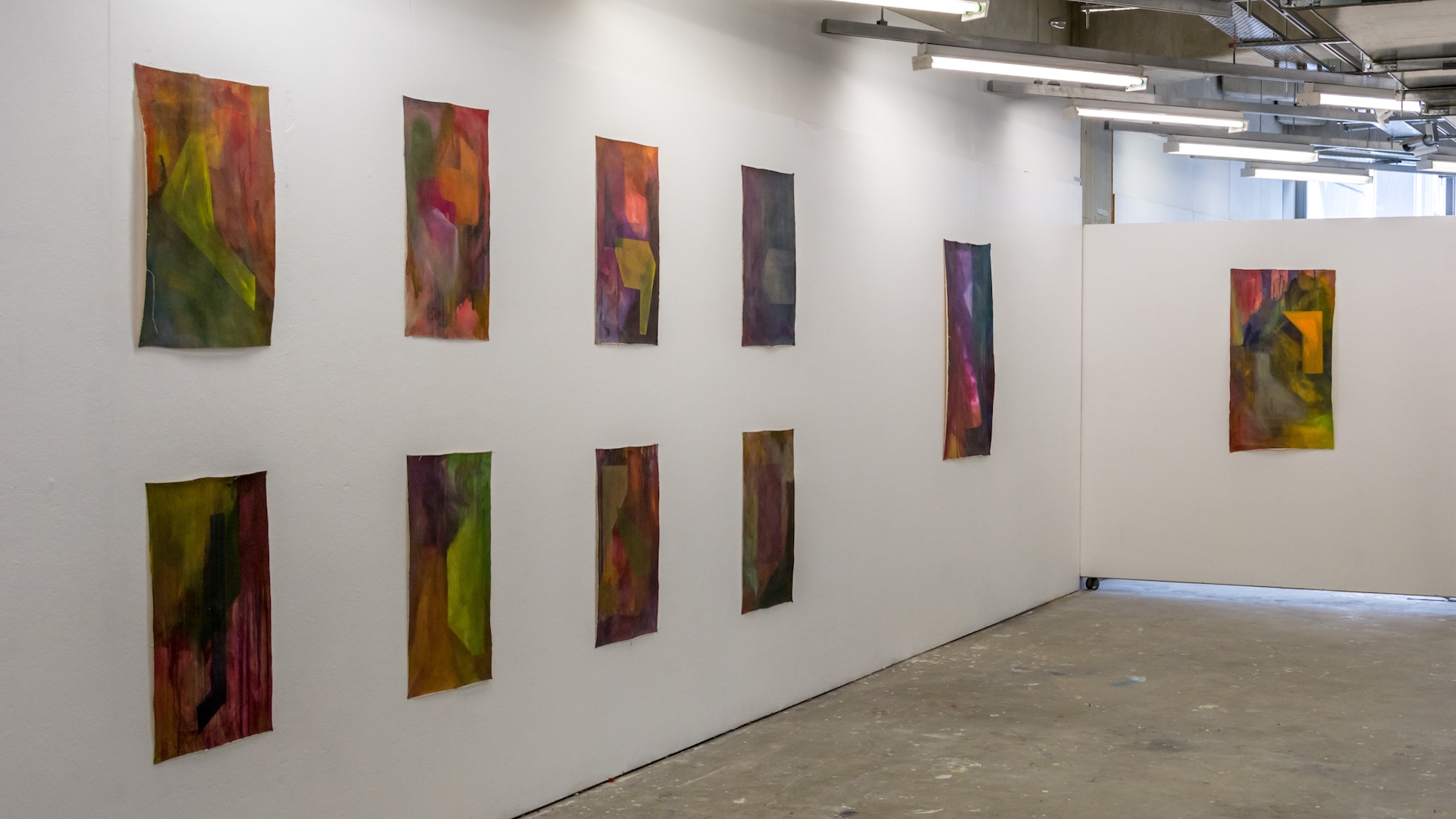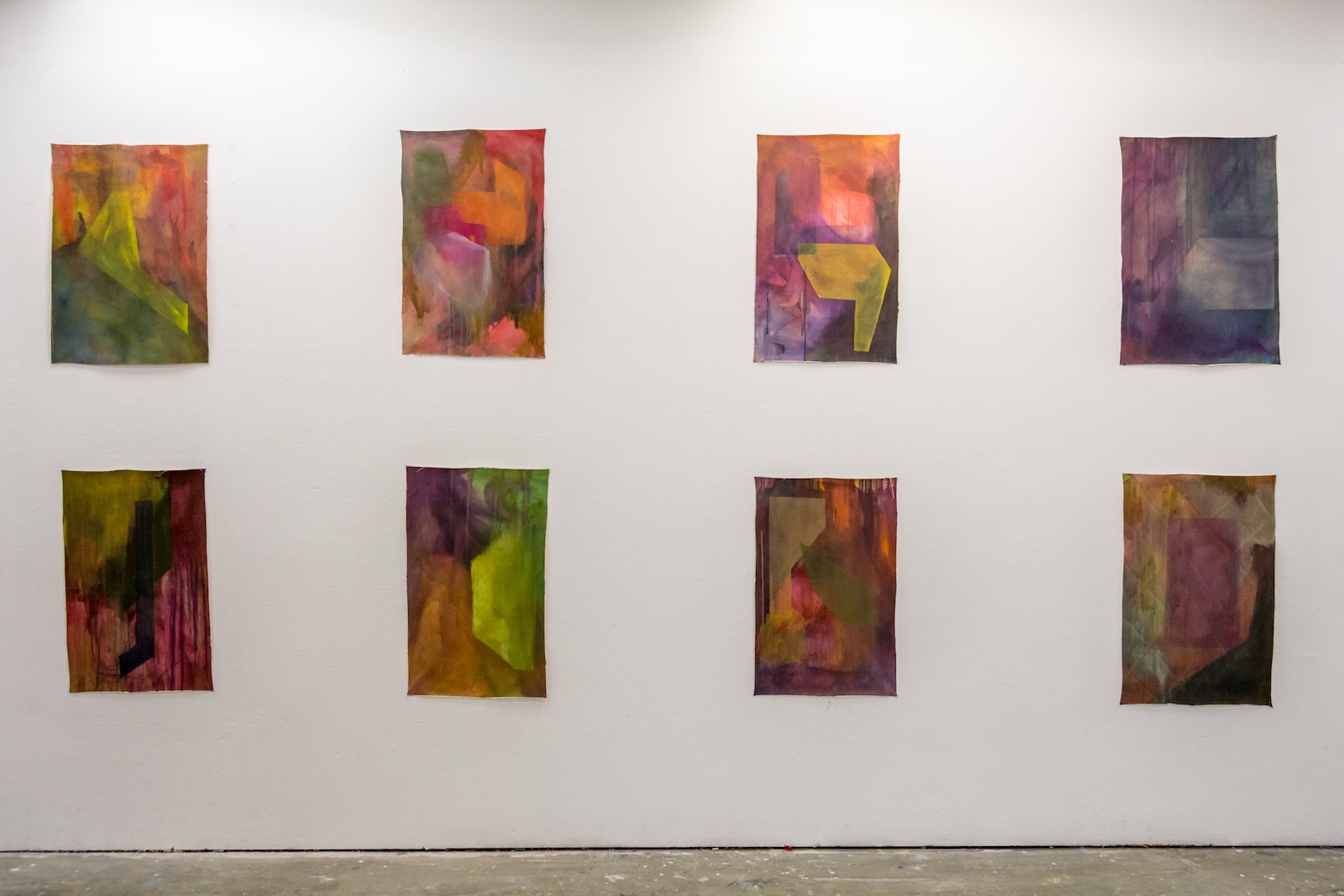

Found Shape (I)
These paintings explore the relationship between chance and intentionality. On unstretched canvas with very fluid paint, the motion of my body is recorded in layers across the painted field. Liquid paint moves with autonomy, running into or avoiding other colours in its path until no fluidity remains. Scrubbing, wiping, pushing and pulling things towards and away from solidity, layering tints and patinas over shapes and gestures creates an atmosphere to navigate. I keep small pockets of the underlayers free to create holes for the viewer to climb through. At this point I respond, introducing a form from my catalogue of shapes to lay over the ground. This catalogue is my ongoing notebook of shapes photographed on my walks and later drawn.
This series is very process-driven and stepping back enough to let accidents occur is vital to my practice. Part of that stepping back is the catalogue of shapes, which I like to think of as an analogue version the drop-down menu on Microsoft Word that lets you just pick a shape to place where you want. In saying that though, I feel I owe these forms a certain level of respect that them after borrowing them from the world. I like to use the overlap of the forms and the gesture to keeps the eye moving around the painting. Often the shapes will point somewhere or have a certain gravitational pull in a way that highlights or contrasts a moment of gesture and colour in the larger field. As John Yao aptly wrote about Steve DiBenedetto’s work, “It looks as if he has done one drawing on top of another or, to put it another way, added one vocabulary (geometric) to another (organic).”[1]
My borrowed shapes act as punctuation in the paintings, giving platforms for the eye to jump off of and around. I like to think my forms have a certain level of sentience. I wouldn’t go as far as to say they chose their placement in the painting, but they feel a particular way about being there — some sit proudly in centre stage and others are like a toddler in a pushchair who end up where they are outside of their control and they definitely let you know how they feel about it.
The work reaches beyond the cropped ends of the canvas as if it could continue on outside of its physical border. The fraying edge alludes to the physicality of the surface but also acts as a gesture outside of the painted field. The final act of cutting the painting from its proverbial bounds and borders is a relief from duty on my part. I soak up the freedom of no longer having to make decisions.
[1] Yao, John. “What Do Artists Need To Make Their Work?”. Hyperallergic, 18/04/20. (accessed 22/05/20) https://hyperallergic.com/556323/what-do-artists-need-to-make-their-work/



